 Homebound #20 (2012), KC Kwan. (PHOTO COURTESY OF BLUE LOTUS GALLERY)
Homebound #20 (2012), KC Kwan. (PHOTO COURTESY OF BLUE LOTUS GALLERY)
A photograph in the window of Blue Lotus Gallery shows a quintessential Hong Kong view — though not one the Tourism Board would want you to see. In it a waterlogged rooftop houses a mess of ferocious-looking TV aerials, with housing estates plus a building in desperate need of urban renewal (or demolition) in the background. It’s a scene of urban squalor, but the aesthetically pleasing rule of thirds has been followed on both the horizontal and vertical planes.
Part of The Streets of Hong Kong exhibition, the image is the work of KC Kwan, an untrained black-and-white shooter whose Instagram bio proclaims, “I am not a photographer.”
This photograph and another — an arresting image of a man fast asleep surrounded by a chaotic assortment of wares — are part of Kwan’s Homebound series. Sarah Greene, Blue Lotus’s founder, explains that the images were taken on the photographer’s regular walk home after working the graveyard shift. “Some images are quite dark and challenging. But this one (of the sleeping man) is a lot of fun and so Hong Kong,” says Greene, adding that Kwan is inspired by avant-garde photographer Daido Moriyama’s raw, energetic style.
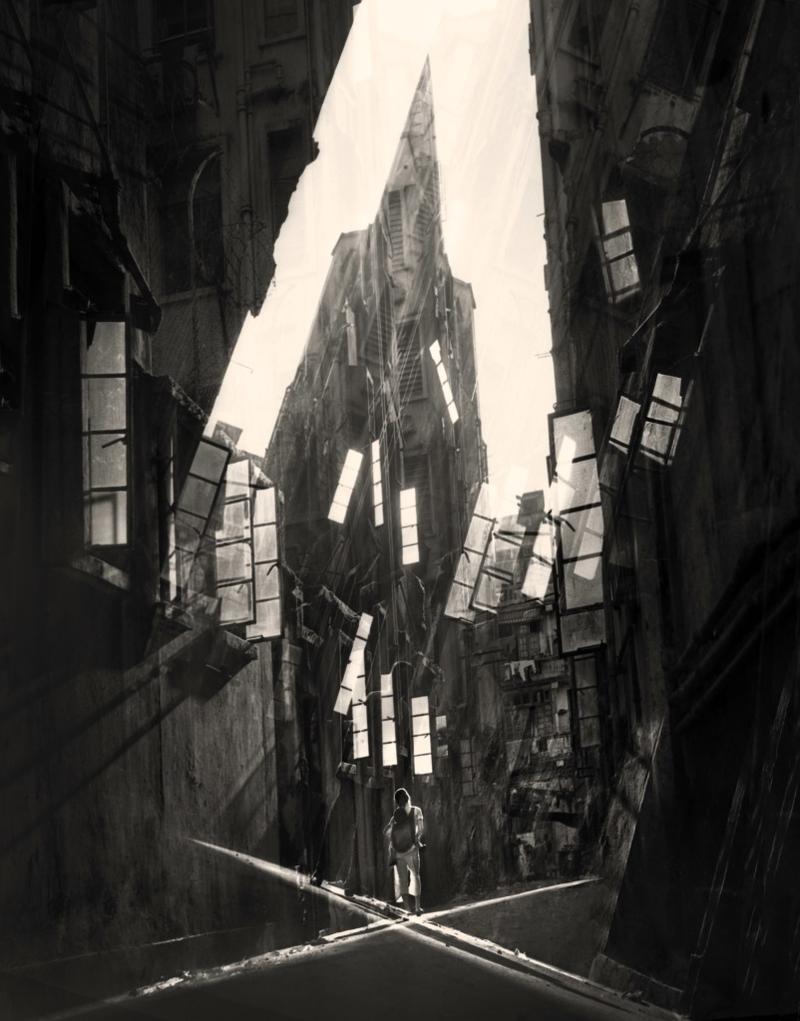 Dreamscape (1962/2010), Fan Ho. (PHOTO COURTESY OF BLUE LOTUS GALLERY)
Dreamscape (1962/2010), Fan Ho. (PHOTO COURTESY OF BLUE LOTUS GALLERY)
To the right and left of Kwan are two masters of light and shadow: the late, great Fan Ho; and the recently emerged prodigy Jason Au. Ho’s contributions are later-period works from the 2010s (he died in 2016 at the age of 84), in which the photographer collaged his works from the 1950s and ’60s. Ho “was always interested in exploring new ways to create imagery”, says Greene. “This is his experimental approach to his own archive.”
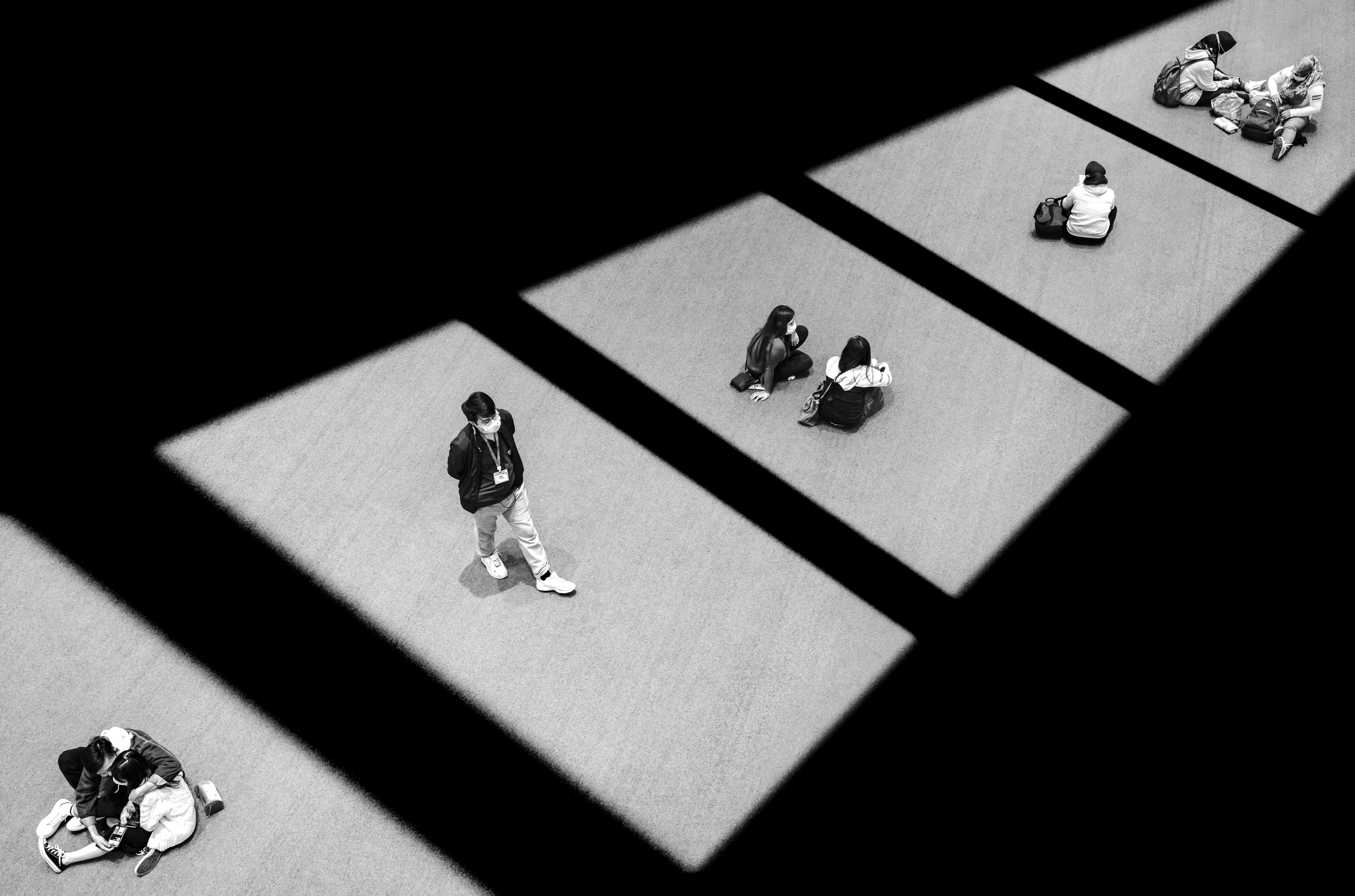 Social Distancing (2020), Jason Au. (PHOTO COURTESY OF BLUE LOTUS GALLERY)
Social Distancing (2020), Jason Au. (PHOTO COURTESY OF BLUE LOTUS GALLERY)
A fan of Ho and Henri Cartier-Bresson, Au with the image Social Distancing (2020) captures a moment that expresses the COVID-19 pandemic perfectly. A security guard walking into the frame completes a scene of people in ones and twos occupying rectangles of light inside a shopping mall, at a time when gatherings were limited to two.
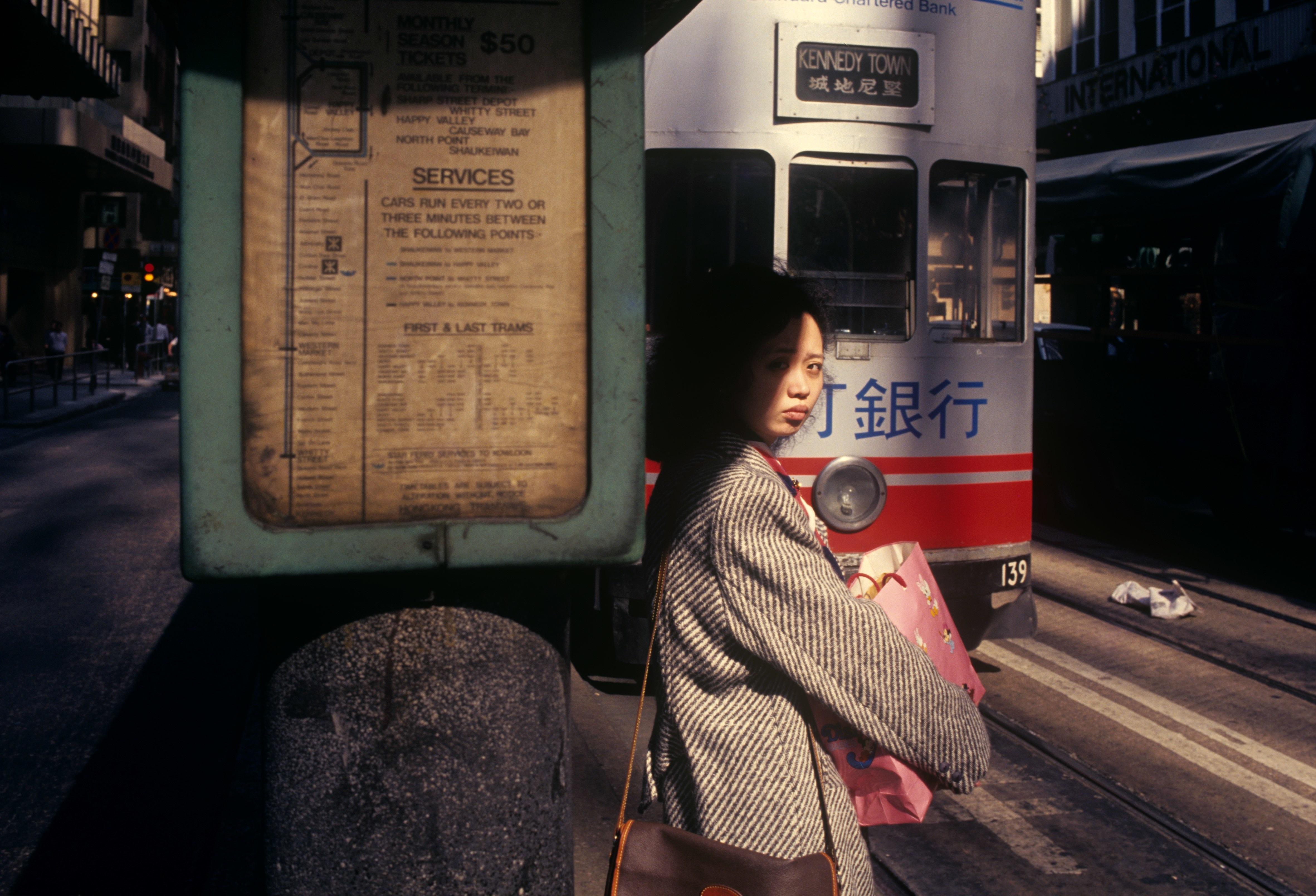 Woman at Tram Stop, Central (1985), Greg Girard. (PHOTO PROVIDED TO CHINA DAILY)
Woman at Tram Stop, Central (1985), Greg Girard. (PHOTO PROVIDED TO CHINA DAILY)
Next to Ho we have another titan: Greg Girard, the color-photography Brassaï of Hong Kong. Girard is best known for his nocturnal images of the city’s demimonde, so it’s surprising to find two daytime shots by him here. In one, from the ’80s, a woman at a tram stop looks sullenly at the camera, her face half in shadow. Arriving in Hong Kong in the ’70s at the age of 18, Girard went on to become a photojournalist for Life magazine and others. “He shot on Kodachrome,” says Greene. “It has these beautiful hues that add a nostalgic emotion.”
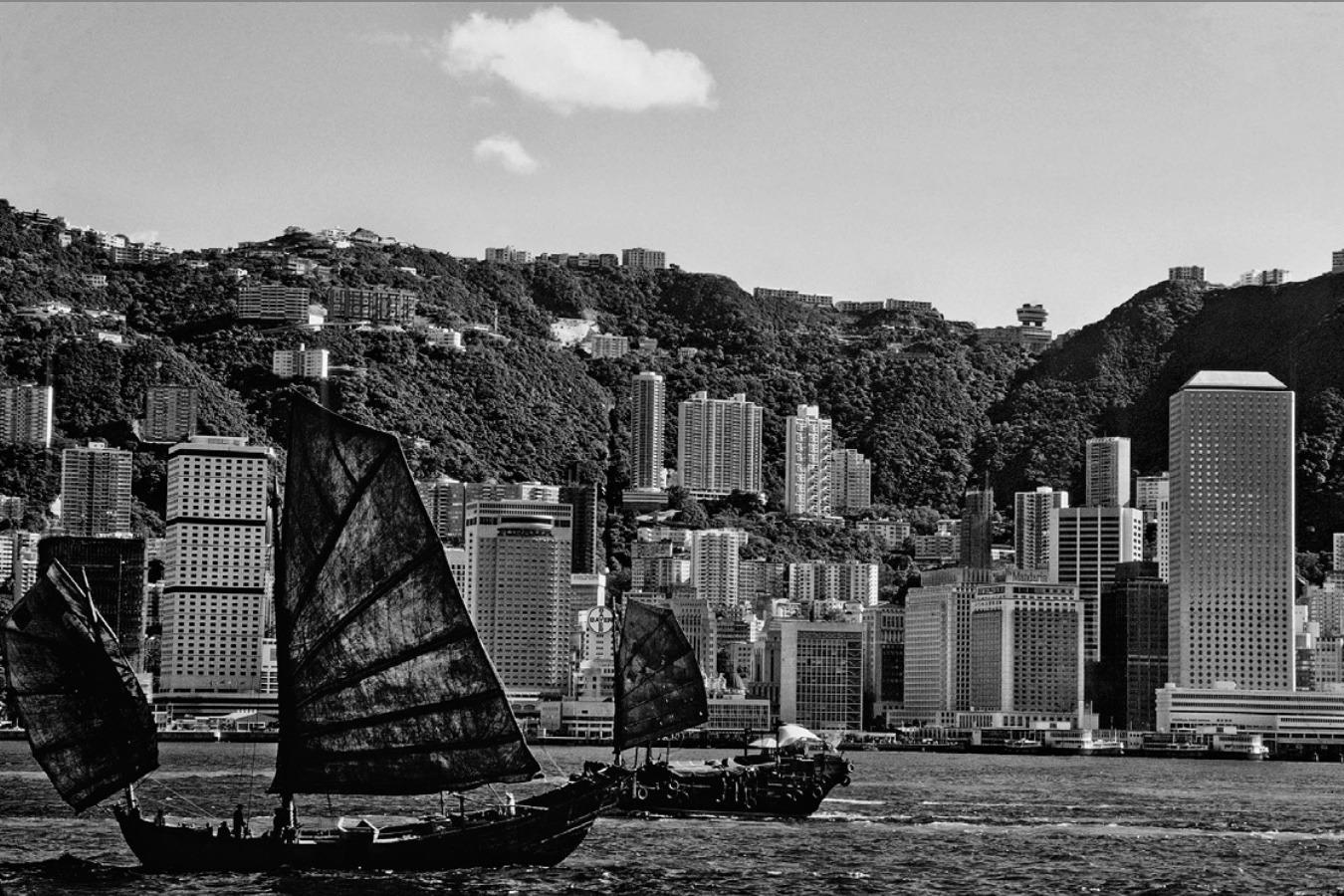 Two of the Last Junks in the Harbor (1980), Robin Moyer. (PHOTO COURTESY OF BLUE LOTUS GALLERY)
Two of the Last Junks in the Harbor (1980), Robin Moyer. (PHOTO COURTESY OF BLUE LOTUS GALLERY)
Like Girard, Robin Moyer is a North American photojournalist who arrived in Hong Kong as a youth (aged 17, in the ’60s). His black-and-whites here are from the ’80s and ’90s, and include Two of the Last Junks in the Harbor (1980), an image that perfectly juxtaposes the ancient-looking vessels against the modern metropolis. Moyer makes his darkroom prints with platinum palladium rather than the more common silver gelatin. “With platinum prints, the tonal gradation is very soft,” Greene explains. “It’s an expensive metal, and it takes real skill to do the developing, which makes the print, as a collectible, even more desirable.”
 Nathan Road Looking South (1999), Keith Macgregor. (PHOTO COURTESY OF BLUE LOTUS GALLERY)
Nathan Road Looking South (1999), Keith Macgregor. (PHOTO COURTESY OF BLUE LOTUS GALLERY)
Staying in the same era, we next encounter Hong Kong in vibrant color through the lens of Keith Macgregor. The city’s neon signs have been disappearing over the past two decades, and Macgregor caught them at their apogee. Notes Greene, “Especially in the ’80s, Hong Kong at night was a feast for the eyes because of all the neon signs.”
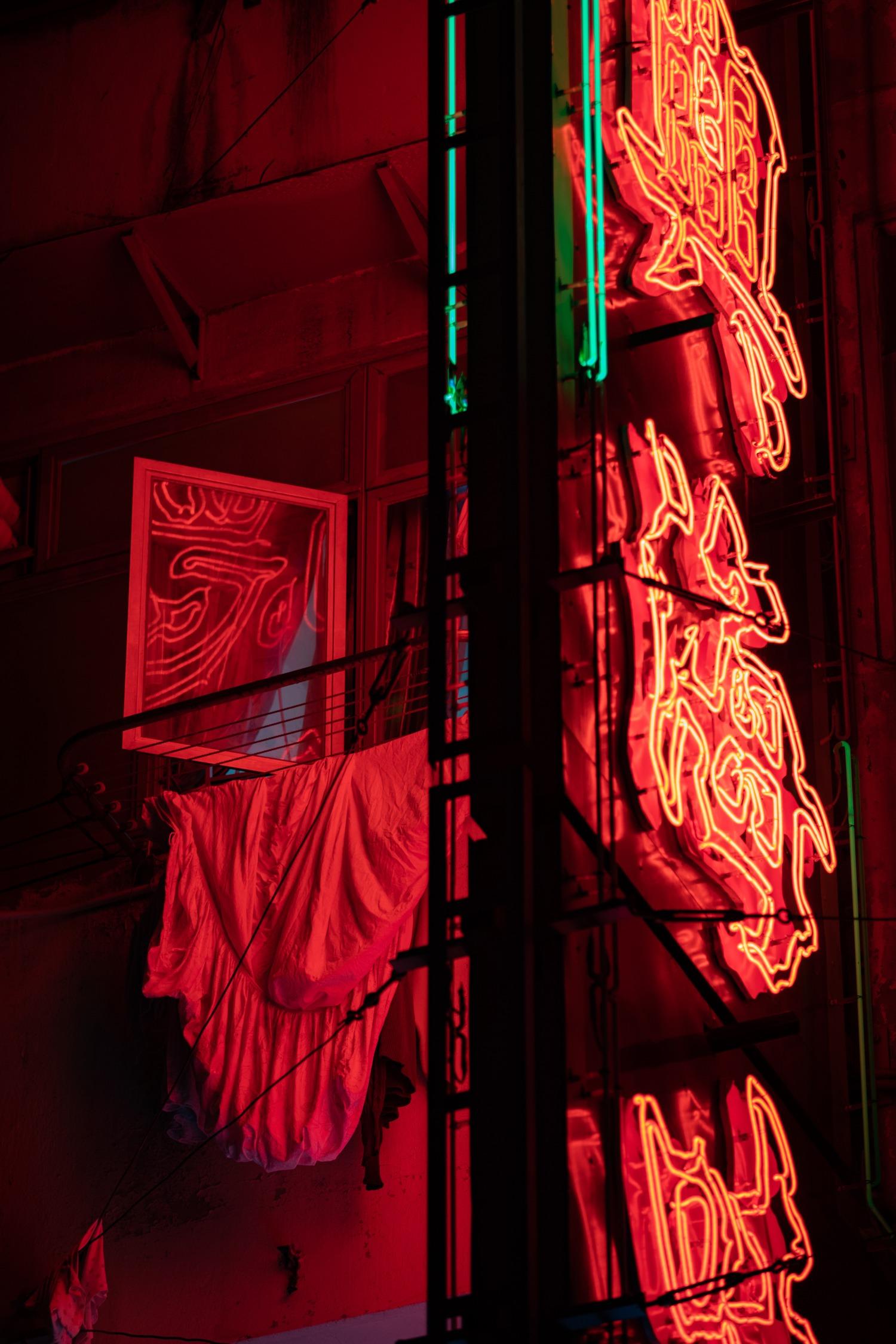 The Sequel Is Rarely As Good (2022), Michael Kistler. (PHOTO COURTESY OF BLUE LOTUS GALLERY)
The Sequel Is Rarely As Good (2022), Michael Kistler. (PHOTO COURTESY OF BLUE LOTUS GALLERY)
Michael Kistler managed to find a neon sign in 2022: “It’s so typical Hong Kong that people are hanging their laundry right next to it,” Greene smiles. Next we have Romain Jacquet-Lagrèze’s graphical Hong Kong Bound – Hong Kong Love: 100 scaled photographs of the Chinese character for “fortune”, made into a 10-by-10 grid of tiles. And finally, there’s architectural photographer Walter Koditek’s gorgeous image of Murray House, his comprehensive archive of mid-century architecture being, says Greene, “an important record for Hong Kong”.
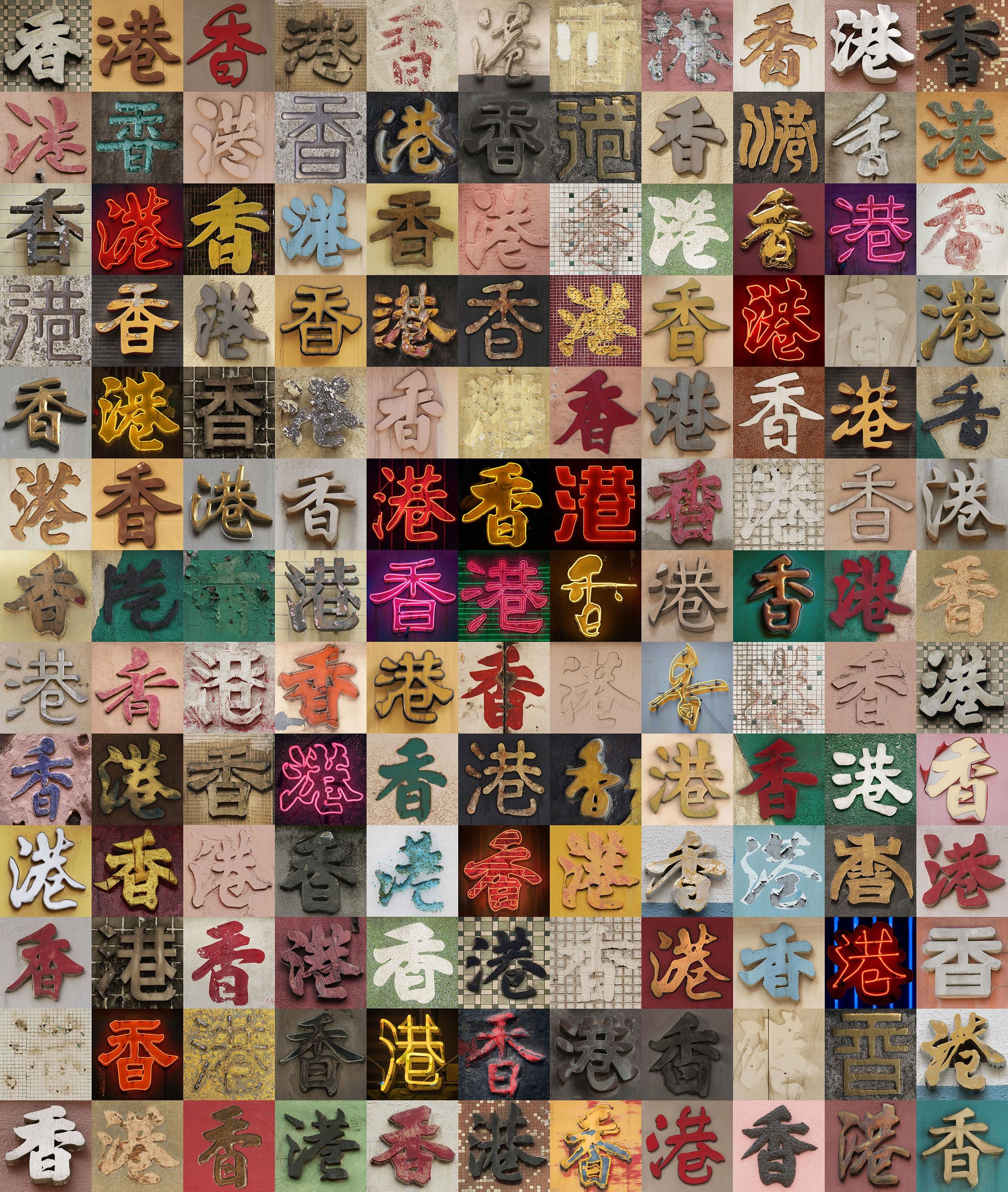 Hong Kong Bound – Hong Kong Love (2023), Romain Jacquet-Lagrèze. (PHOTO COURTESY OF BLUE LOTUS GALLERY)
Hong Kong Bound – Hong Kong Love (2023), Romain Jacquet-Lagrèze. (PHOTO COURTESY OF BLUE LOTUS GALLERY)
The Streets of Hong Kong is a compact show perfect for the time-poor passerby with half a lunch hour to spare. Thanks to expert curation, the exhibition manages to convey a broad sweep of Hong Kong street photography.
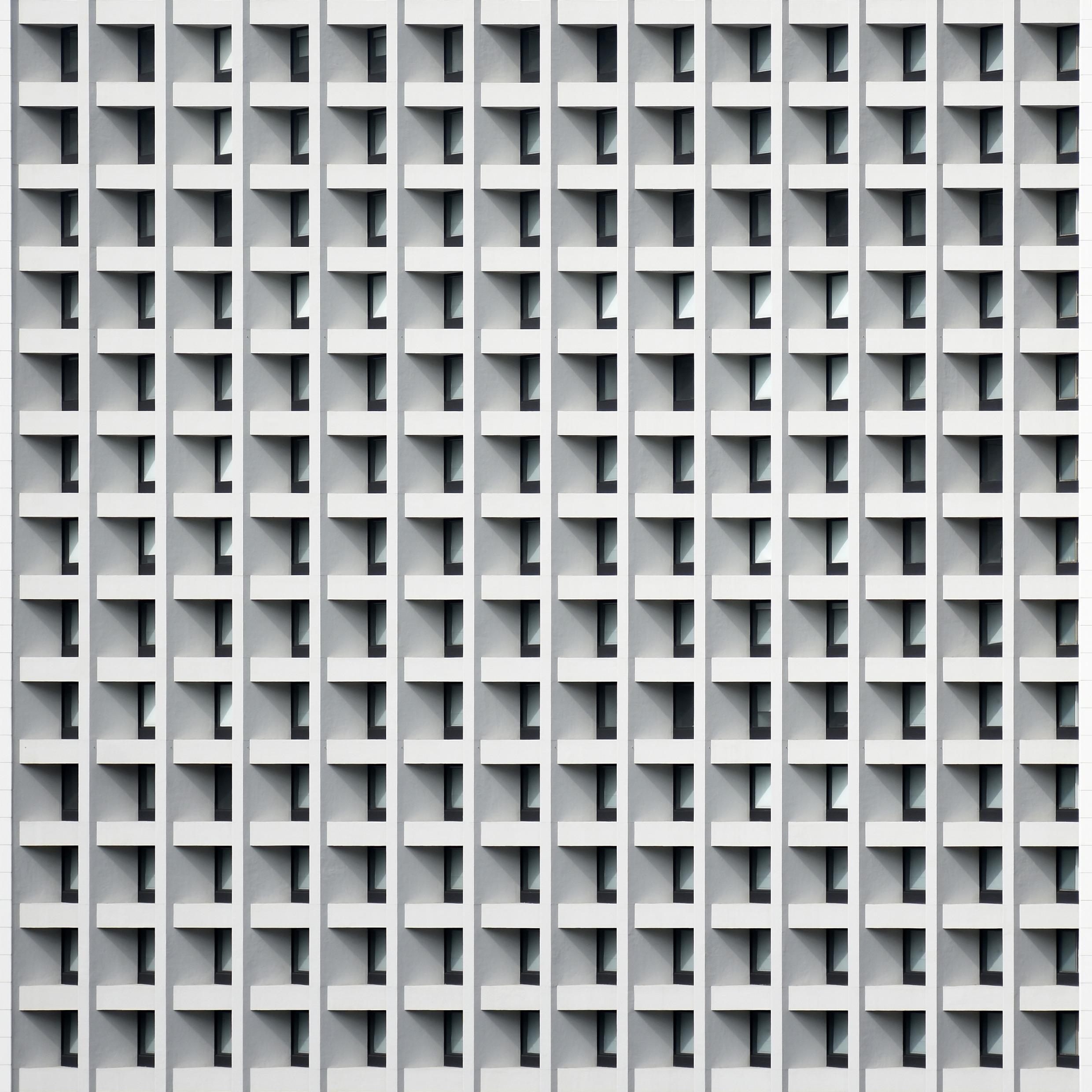 Murray House (Hong Kong Modern Architecture of the 1950s–1970s, 2017–21), Walter Koditek. (PHOTO COURTESY OF BLUE LOTUS GALLERY)
Murray House (Hong Kong Modern Architecture of the 1950s–1970s, 2017–21), Walter Koditek. (PHOTO COURTESY OF BLUE LOTUS GALLERY)
If you go
The Streets of Hong Kong
Dates: Through Apr 30
Venue: Blue Lotus Gallery, G/F, 28 Pound Lane, Sheung Wan


